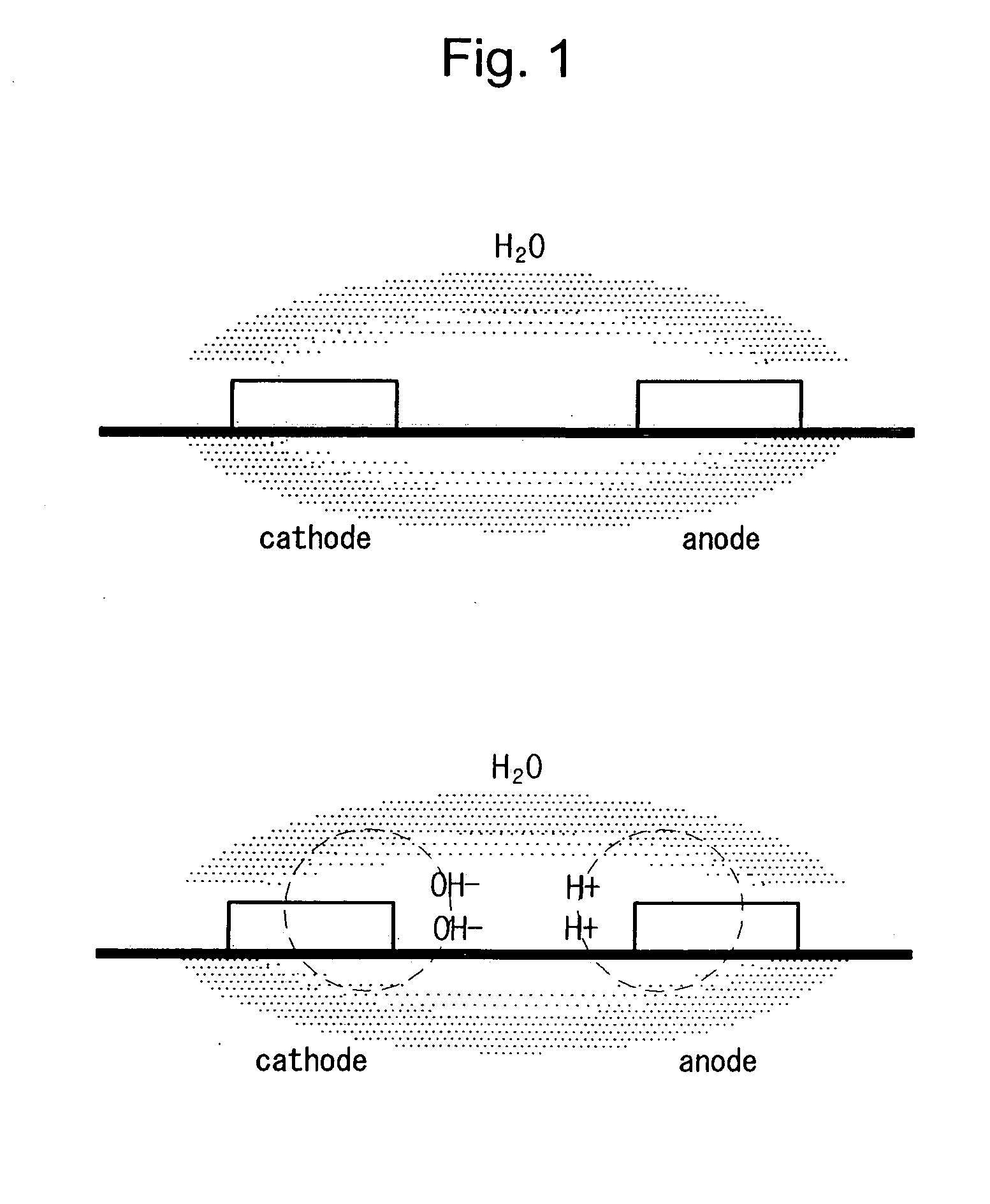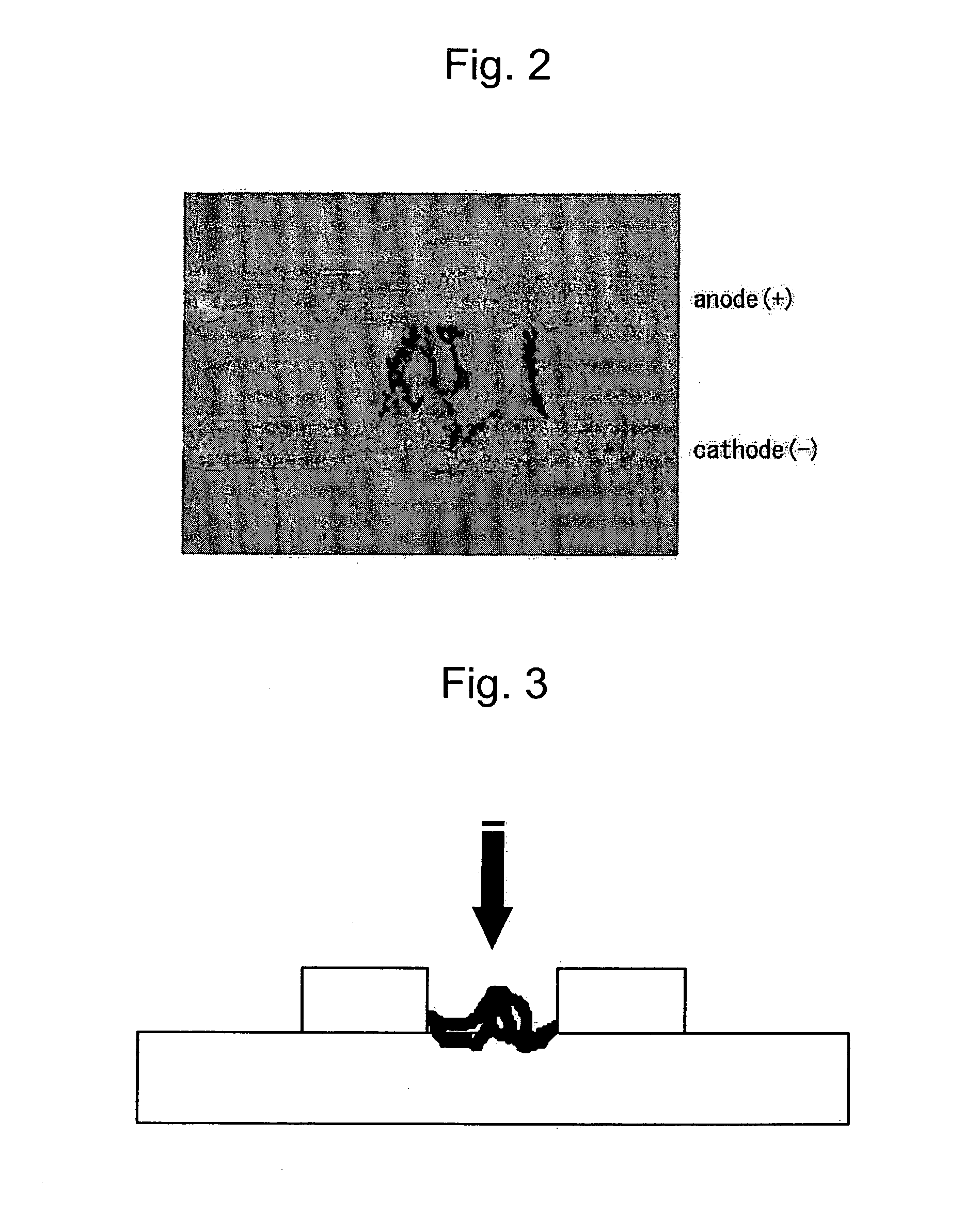Method for manufacturing printed circuit board using Ag-Pd alloy nanoparticles
a technology of ag-pd alloy nanoparticles and printed circuit boards, which is applied in the direction of conductive layers on insulating supports, inks, packaging, etc., can solve the problems of deteriorating conductivity, inability to use easy and convenient metal wiring on pcb, and oxidation, etc., to achieve excellent conductivity and anti-migration, competitive price, and excellent
- Summary
- Abstract
- Description
- Claims
- Application Information
AI Technical Summary
Benefits of technology
Problems solved by technology
Method used
Image
Examples
embodiments
[0036] Hereinafter, the present invention will be described in more detail by way of the following embodiments, which are not intended to limit the scope of the present invention.
examples 1 to 5
Preparation of Ag—Pd Alloy Nanopraticle Dispersed Conductive Ink
[0038] 2 Kinds precursors of Palladium acetate and silver acetate precursor were dissolved in 50 Ml of 0.1M sodium dodecyl sulfate (SDS) aqueous solution to have a concentration of 4.5×10−4 mol. The solution was heated slowly in an oil bath and reacted at 130° C. for 9 hours to obtain an ink dispersed with Ag—Pd alloy nanoparticle size of 1 to 50 nm. Inks with various Pd weight % based on the Ag—Pd alloy were prepared: 5 weight % (example 1); 10 weight % (example 2); 20 weight % (example 3); 30 weight % (example 4); and 40 weight % (example 5),
examples 6 to 10
[0040] The conductive ink including Ag—Pd alloy nanoparticles manufactured in examples 1 to 5 was sprayed with L / S 100 microns on a substrate using an ink-jet printer and cured at 250° C. to form wiring. The conductivity of the substrate was measured. 2.5V voltage for 60 seconds to the substrate was applied under the condition of humidity 85%, temperature 85° C. Changes in insulation resistance was observed and the time maintaining the initial insulation resistance (the time forming dendrite) without any changes was detected which was summarized in Table 1 with the result of Comparative example 2. When Pd weight % in the Ag—Pd alloy is 30 weight %, the change in the insulation resistance was illustrated in FIG. 6.
TABLE 1Composition(Ag weight % / ConductivityTime for DendriteCategoryPd weight %)(μΩ· cm)formation(hr)ComparativeAg 1003.2360example. 2Example 695 / 5 5.8560Example 790 / 109.0182.5Example 880 / 2015.8995Example 970 / 3025.74120Example 1060 / 4048.3—
[0041] Referring to Table 1, when...
PUM
| Property | Measurement | Unit |
|---|---|---|
| diameter | aaaaa | aaaaa |
| diameter | aaaaa | aaaaa |
| diameter | aaaaa | aaaaa |
Abstract
Description
Claims
Application Information
 Login to View More
Login to View More - R&D
- Intellectual Property
- Life Sciences
- Materials
- Tech Scout
- Unparalleled Data Quality
- Higher Quality Content
- 60% Fewer Hallucinations
Browse by: Latest US Patents, China's latest patents, Technical Efficacy Thesaurus, Application Domain, Technology Topic, Popular Technical Reports.
© 2025 PatSnap. All rights reserved.Legal|Privacy policy|Modern Slavery Act Transparency Statement|Sitemap|About US| Contact US: help@patsnap.com



